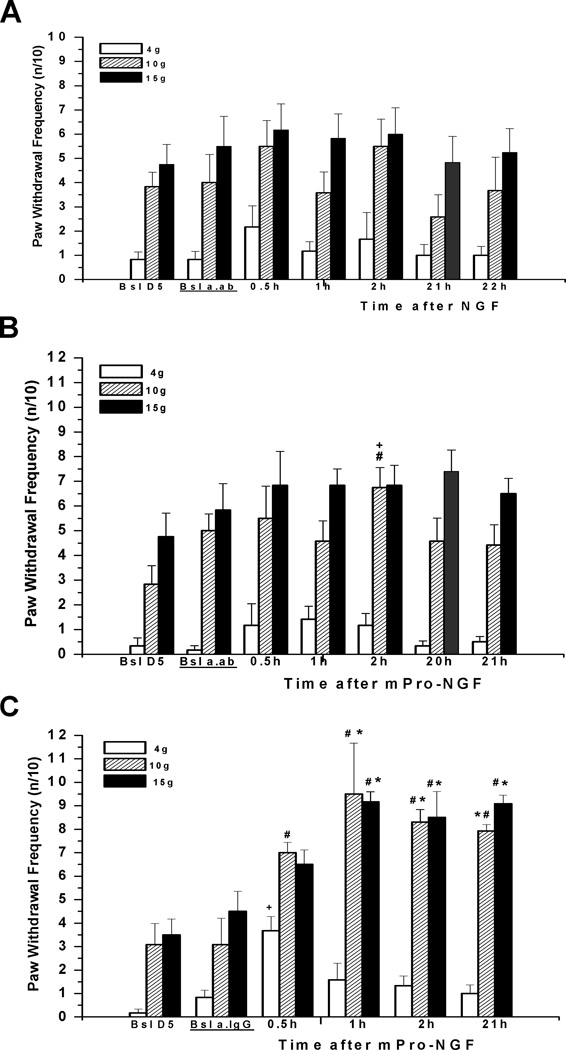Figure 6.
A polyclonal antibody to p75NTR prevented mechanical hyperalgesia induced by NGF and mProNGF. (A) When pre-injected (20 µL) into the paw 4h before NGF (500 ng/10 µl), the antibody prevented any significant hyperalgesia at 0.5h-21h (n=6). (B) A similar inhibition occurred when the antibody was injected 4h before mPro-NGF (500 ng/10 µL) (n=6). Significant elevation of response was found only for the 10g force at 2h after mPro-NGF injection. #P<0.05 vs. baseline-after-antibody values (Wilcoxon matched pairs test, two-tailed), and +P<0.05 vs. baseline-after-antibody values and vs. 21h values for 3 groups comparison: Bsl a.ab., 2h, 21h (Friedman test followed by Dunn's post hoc test). Bsl a.ab. = 2.5h after ab.p75 injection. (C) In controls, where IgG (20 µL) from naïve serum was injected 4h prior to mPro-NGF, hyperalgesia was fully present(n=6; compare with Fig 5). Bsl a.IgG=2.5h after IgG injection.

